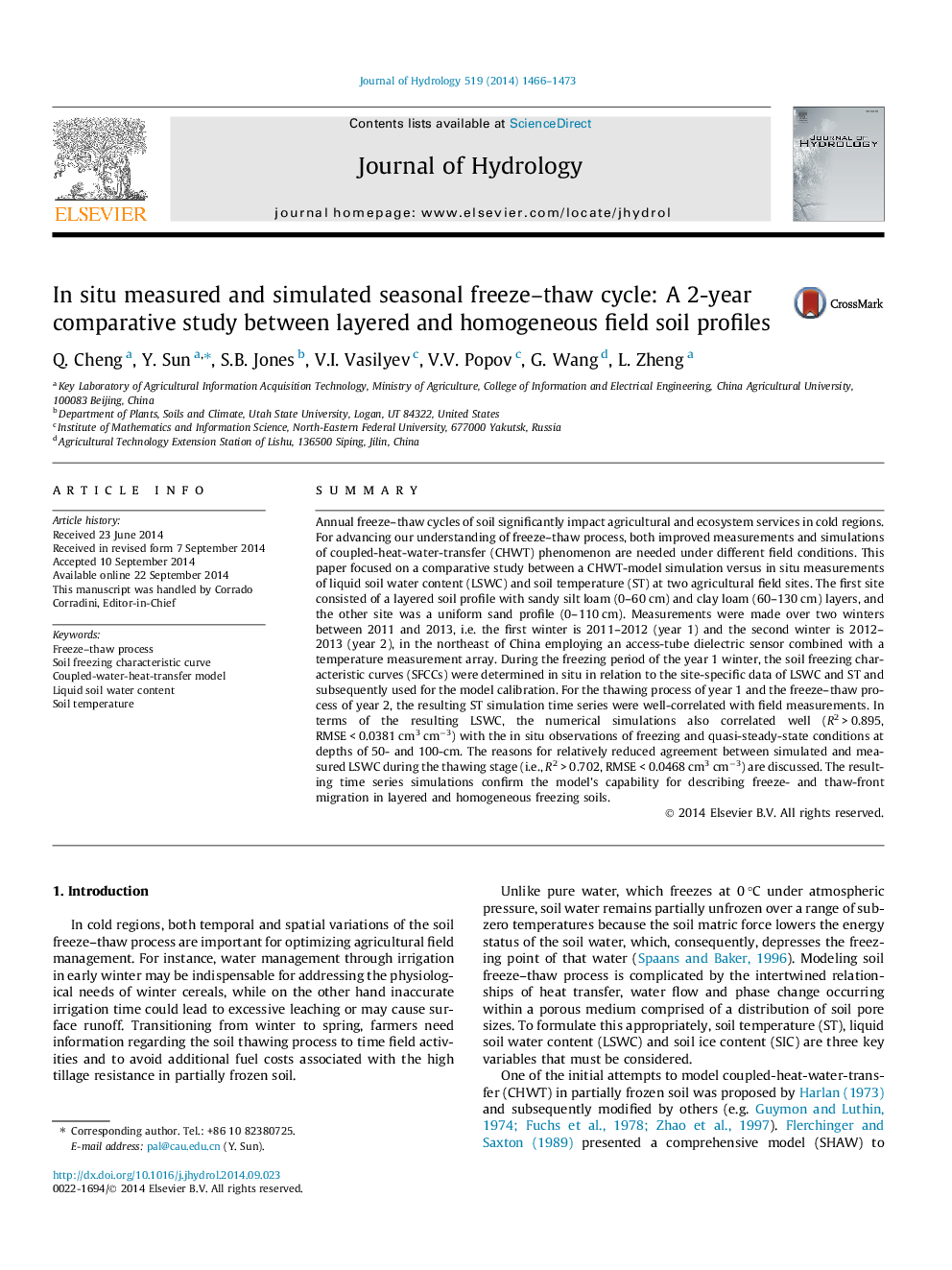| Article ID | Journal | Published Year | Pages | File Type |
|---|---|---|---|---|
| 6411931 | Journal of Hydrology | 2014 | 8 Pages |
â¢Dielectric tube sensor for measuring liquid soil water content in frozen soil.â¢Coupled-heat-water-transfer model calibrated by soil freezing characteristics.â¢Experimental data yielded from 2-year and two plots in uniform and layered fields.â¢Assessment of coupled-heat-water-transfer model with in-situ measured data.
SummaryAnnual freeze-thaw cycles of soil significantly impact agricultural and ecosystem services in cold regions. For advancing our understanding of freeze-thaw process, both improved measurements and simulations of coupled-heat-water-transfer (CHWT) phenomenon are needed under different field conditions. This paper focused on a comparative study between a CHWT-model simulation versus in situ measurements of liquid soil water content (LSWC) and soil temperature (ST) at two agricultural field sites. The first site consisted of a layered soil profile with sandy silt loam (0-60Â cm) and clay loam (60-130Â cm) layers, and the other site was a uniform sand profile (0-110Â cm). Measurements were made over two winters between 2011 and 2013, i.e. the first winter is 2011-2012 (year 1) and the second winter is 2012-2013 (year 2), in the northeast of China employing an access-tube dielectric sensor combined with a temperature measurement array. During the freezing period of the year 1 winter, the soil freezing characteristic curves (SFCCs) were determined in situ in relation to the site-specific data of LSWC and ST and subsequently used for the model calibration. For the thawing process of year 1 and the freeze-thaw process of year 2, the resulting ST simulation time series were well-correlated with field measurements. In terms of the resulting LSWC, the numerical simulations also correlated well (R2Â >Â 0.895, RMSEÂ <Â 0.0381Â cm3Â cmâ3) with the in situ observations of freezing and quasi-steady-state conditions at depths of 50- and 100-cm. The reasons for relatively reduced agreement between simulated and measured LSWC during the thawing stage (i.e., R2Â >Â 0.702, RMSEÂ <Â 0.0468Â cm3Â cmâ3) are discussed. The resulting time series simulations confirm the model's capability for describing freeze- and thaw-front migration in layered and homogeneous freezing soils.
